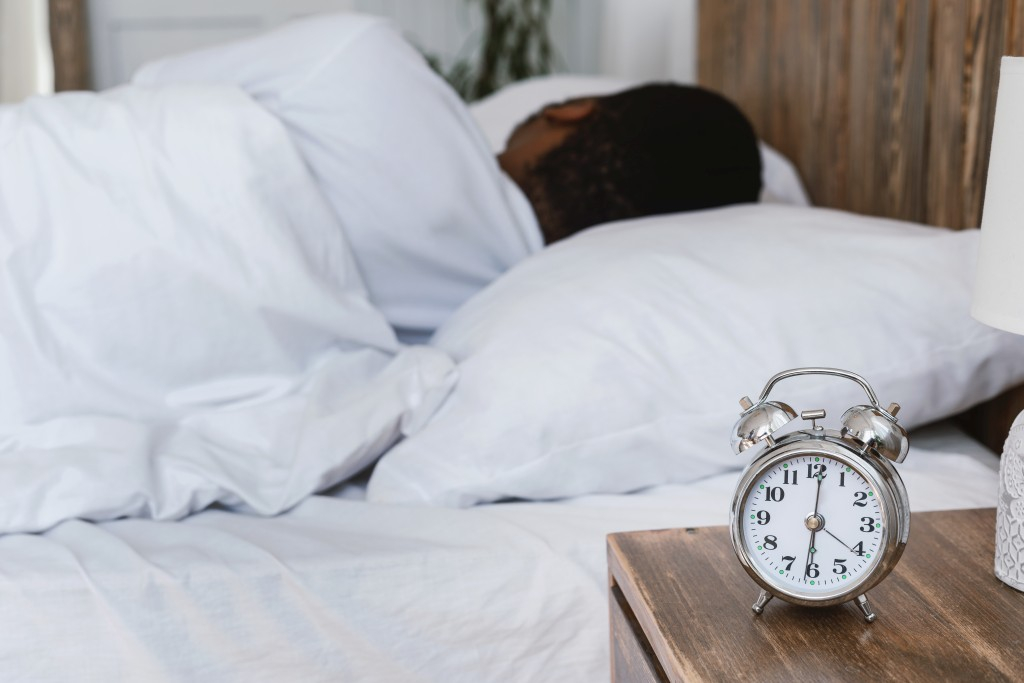In the quest for relief from neck and back pain, one crucial yet often underestimated factor plays a pivotal role: sleep. The quality and quantity of your sleep can significantly impact the well-being of your spine.
Read on for insights and practical tips to create a restful routine and healthy environment for optimal rest that supports your journey to a healthier spine.
Understanding the Connection between Sleep and Pain in the Back and Neck
- Sleeping is a restorative process crucial for overall health, including spine health.
- Disruptions in sleeping patterns can contribute to increased neck and back pain and hinder the body's natural healing mechanisms.
- Sleeplessness can also cause stress and fatigue, both of which can make pain even worse.
Investing in your Quality of Sleep
We often talk about quality of life, but considering that you may spend around a third of your 24 hours in bed, it's worth investing in your quality of sleep. The right mattress and pillow/s will support the natural curves of your spine and minimize strain on your back and neck to help you get the rest you need. That doesn't have to be the most expensive one though, just the one that feels most comfortable.
Adding body pillows can also help you find supported and comfortable positions for a good rest.
Establishing a Consistent Schedule
Establishing and maintaining a consistent sleep schedule has a number of benefits, not only for managing back and neck pain, but also for your general wellbeing.
When you maintain a consistent schedule by going to bed and waking up at similar times every day, your sleep quality will improve as your circadian rhythm is regulated. This also has a direct impact on your energy levels and your ability to manage stress during your waking hours, both of which can affect your experience of pain.
You might be so exhausted at the end of the day that you don't need any help, but sometimes pain can make it harder to get and stay asleep. Besides going to bed and waking at similar times each day, some other practices that will help you establish a schedule and improve your quality of sleep are the following:
 Create a Relaxing Bedtime Routine
Create a Relaxing Bedtime Routine
- Anyone with young children knows how important this is, but so often we fail to give ourselves the same consideration.
- Engage in calming activities before bedtime to signal to your body that it's time to wind down.
- Avoid stimulating activities and electronic devices that can interfere with your transition to sleep.
Practice Mindfulness and Relaxation Techniques
- Meditation, journaling, deep breathing or progressive relaxation can help ease your body into a restful state.
Limit Caffeine and Heavy Meals Before Bed
- Different people metabolize caffeine at different rates - experiment to find out what time to have your last cup of coffee so you can still get a good night's rest.
- A heavy meal before bed can cause discomfort and heartburn so try to eat earlier or keep meals light when eating late.
Creating a Comfortable Environment
While it may seem obvious, a comfortable and conducive environment is a factor often missed when establishing a good routine. A great sleep environment is cool, dark and quiet.
Cool
- Synthetic bedding can make you feel uncomfortably hot while bedding made from natural fibres is more breathable.
- Use a fan or open a window to ensure the room is not stuffy, or adjust the central heating to ensure you are not too hot.
Dark
- Switch off all lights in the room and check for light leaks from the passage or other rooms
- Check for sneaky pilot lights on appliances or devices in your room - those can be quite bright when there is no other light!
- Invest in blockout curtains if you experience long daylight hours due to the season, or if there is lots of light coming in from the windows.
- Of course there is the cheap and simple alternative of using a sleep mask!
Quiet
- You might be fortunate enough to live in a quiet area, but if not, it is worthwhile having your windows double glazed if there is lots of noise coming in from outside.
- Take a double pronged approach when dealing with a snoring partner - help them find solutions for their snoring, and find ways for you to block it out with earplugs or similar devices.
- A white noise machine can also help create a serene environment.
Addressing Sleep Disorders
It is important to address underlying disorders such as sleep apnea, not only for the effect they have on your back and neck pain, but also on the effect they will have on your long term health. Make it a priority to consult with a healthcare professional if persistent issues contribute to your neck and back pain.
Engaging in Regular Physical Activity
Getting a good rest is not only about what you do just before bed, it's also about how you spend your day. Regular physical activity will not only reduce stress and tension and improve your neck and back pain, but will also promote better rest.
 Good Nights for Better Days
Good Nights for Better Days
A restful and supportive routine is a cornerstone in the holistic approach to managing back and neck pain. By understanding the relationship between sleep and spinal health, you can empower yourself to make intentional choices that promote better sleep quality and, in turn, alleviate discomfort.Creating a restful routine is a gradual process, and the cumulative effects of positive habits can significantly impact your overall well-being. As you embark on this journey, prioritize the importance of sleep in nurturing a healthier and more resilient neck and back.
Also remember that good habits are not only about how you get to sleep, but also about how you wake up! Get support in developing your restful sleep routine, and find your new waking routine by joining our Thrive Beyond Pain Journey course, a 6 week online group pain coaching program where we guide you in developing your own personalised plan to find freedom from back and neck pain by addressing the areas in your life that are not helping you, and finding ways to turn those challenges into opportunities.



